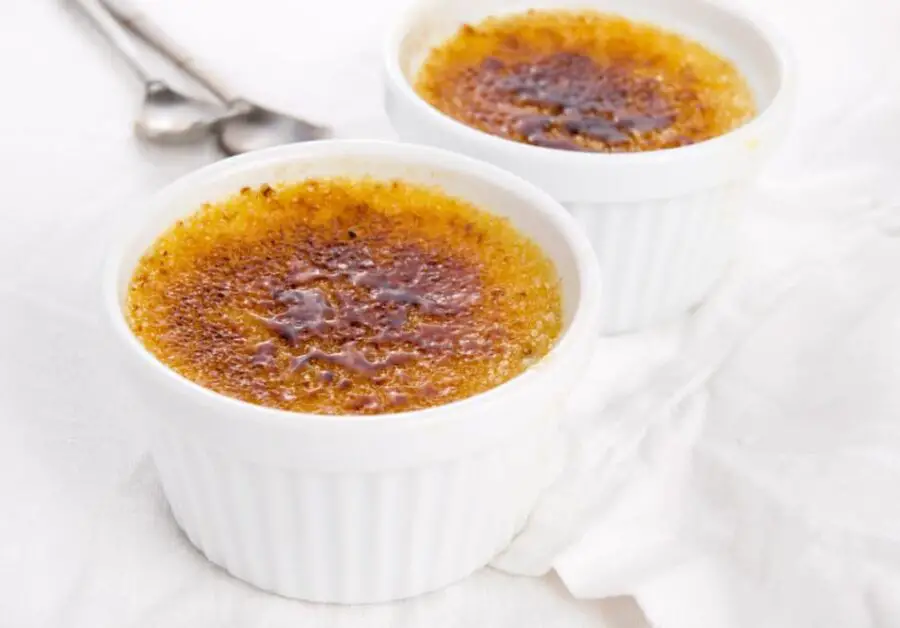For anyone who’s a fan of decadent desserts like Crème brûlée, it’s quite likely you’re familiar with ramekins and how they’re used. But, my guess is that if you’re here reading this article, it’s also possible you have no idea what a monkey dish is.
Am I right?
At first glance, the two of them appear somewhat similar but, in fact, differ greatly from one another and for a variety of reasons. We’ll get in more detail about what all of them are later, but for now, we’ll discuss the major one.
The major difference between monkey dishes and ramekins is that monkey dishes are shallow, flat-bottomed bowls that are intended for serving foods like sauces, condiments or small appetizers, whereas ramekins are cylindrical, straight edged bowls that are designed for dishes prepared in high temperature environments like ovens.
Besides their design and usage differences, which we’ll expand on more as we continue, there are other characteristics that distinguish them from each other. Most importantly, are the origins of each of them, which is what we’ll be talking about first.
Historical Differences Between Monkey Dishes and Ramekins
As with so many of the common cookware items we have in our kitchens today, the origins of them aren’t always clear, and that’s definitely the case with the ramekin and the monkey dish.
However, of the two of them, the origins of the ramekin are more agreed upon than the monkey dish, so we’ll discuss it first.
The modern term “ramekin” is tied to at least three different versions of the word derived from French, Dutch and German languages.
In French, the word is translated as “ramequin”, while in German it’s translated as “ramken” which is loosely defined as “cream”. Last, the Dutch version is known as “rammeken” which is interpreted to mean “cheese dish”.
The usage of words meaning cream and cheese has led some to speculate that hot dishes containing these items, along with eggs, might have been consumed. Over time, the interpretation shifted to focus not only on the foods that were eaten but also on the type of cookware used to make them.
As difficult as it is to clearly establish the origin of the ramekin, monkey dishes are shrouded in a mist of legend and confusion.
There are several schools of thought, with perhaps the last one being the most believable.
The first of these is that monkey dishes were used by street performers that played an instrument known as an organ grinder. During the middle of the 19th century, these street performers were quite popular and a good reason for this was the presence of a monkey that would accompany their performance, dancing and collecting tips while the organ music played.
To collect the money, the monkeys used bowls small enough to fit into their hands, hence the term “monkey dish”.
In a slighter darker version of its origin, it’s said that the first monkey dishes were made from the skulls of monkeys! That sounds pretty grim and not at all appetizing, does it?
And finally, in what’s thought to be the version that’s closest to the truth relates back to the era of Chinese dynasties. Royalty of the time lived in constant fear of being poisoned, so monkeys were given samples of food in small dishes to see the food had been tainted.
| Feature | Ramekin | Monkey Dish |
|---|---|---|
| Origin | Derived from French, Dutch and German languages, used for hot dishes containing cream and cheese and individual portions such as creme brulee and souffle in medieval times | Made from monkey skulls or as a food tester for Chinese royalty |
| Etymology | French: “ramequin”, German: “ramken”, Dutch: “rammeken” | Unknown |
| Interpretation | Originally used for hot dishes containing cream and cheese, over time, the interpretation shifted to focus not only on the foods that were eaten but also on the type of cookware used to make them | Unknown |
Material Differences Between Monkey Dishes and Ramekins
Most modern monkey dishes are microwave, dishwasher and oven safe. However, it’s recommended that food should only be reheated in monkey dishes.
On the other hand, ramekins are made specifically for use in ovens. They are often made with materials like stoneware that have a very high tolerance to heat.
| Feature | Ramekin | Monkey Dish |
|---|---|---|
| Microwave Safe | No | Yes |
| Dishwasher Safe | No | Yes |
| Oven Safe | Yes | Yes |
| Recommended Use | Oven use | Reheating food |
| Material | Stoneware with high heat tolerance | Unknown |
Usage Differences Between Monkey Dishes and Ramekins
Because monkey dishes are better suited to low heat or room temperatures, they’re most often used as small plates or appetizer dishes.
In addition, they’re ideal for sauces and condiments or to hold finger foods like nuts, fruits and similar items.
Ramekins have a more limited use in the kitchen. As previously mentioned, the use of ramekins is most often associated with specialty desserts like Crème brûlée or other baked goods like individually portioned cakes and pies.
Although it’s a less common use, ramekins can also be used like monkey dishes to hold snacks, dips, nuts or other finger foods.
| Feature | Ramekin | Monkey Dish |
|---|---|---|
| Primary Uses | Specialty desserts like Crème brûlée or individually portioned cakes and pies | Small plates or appetizer dishes |
| Other Uses | Holding snacks, dips, nuts or other finger foods | Holding sauces and condiments or finger foods like nuts, fruits and similar items |

Hiya! I’m Kimberly, a contributing writer here at Miss Buttercup. I was born and raised in the UP, Michigan’s Upper Peninsula for those who don’t know, the land of beautiful, beach-filled sunny summer days and bone-chilling long winters. Growing up there made me appreciate all the little things about life, especially the way a delicious meal can bring people closer together. I try and put that same feeling into each article I write and I hope it comes across that way!

